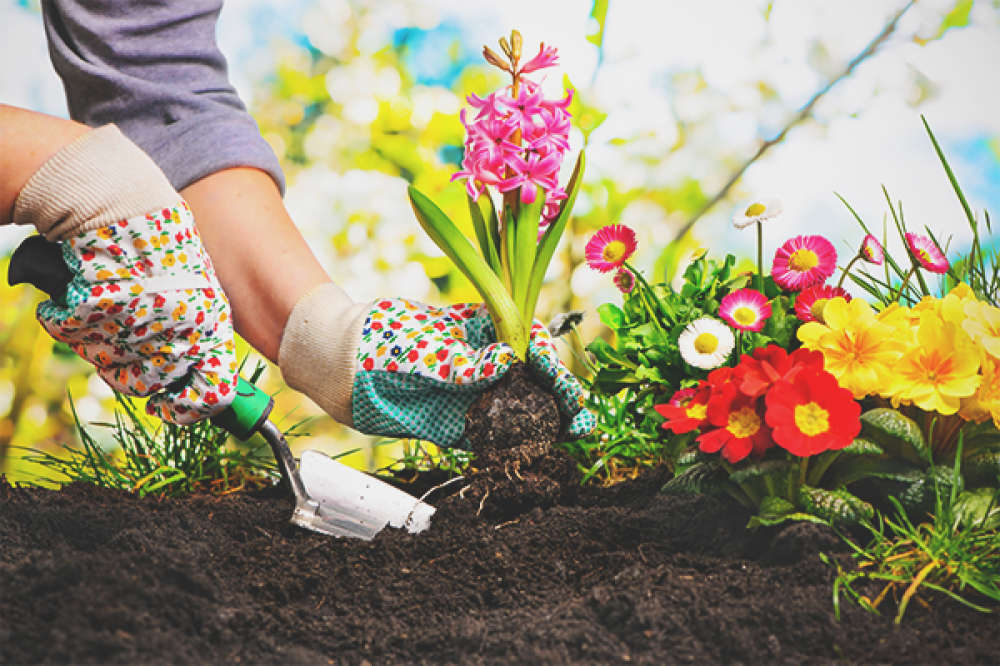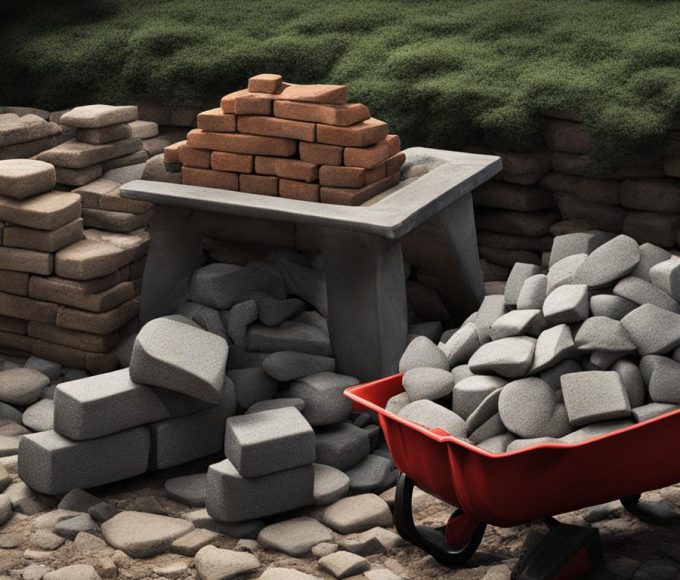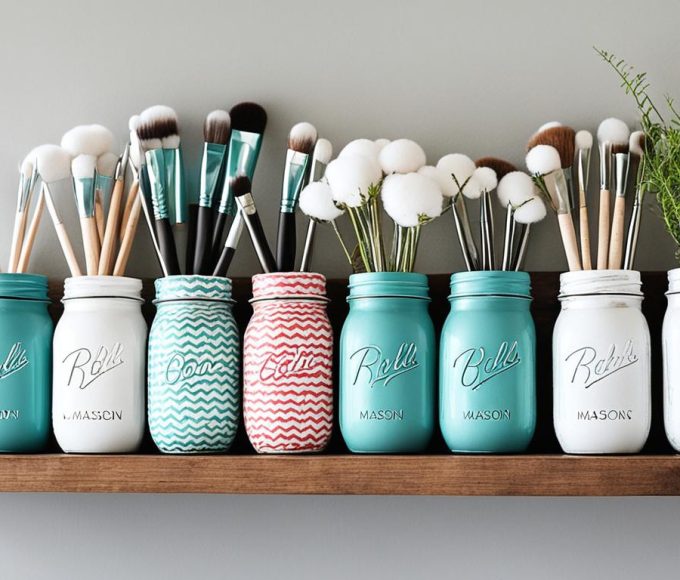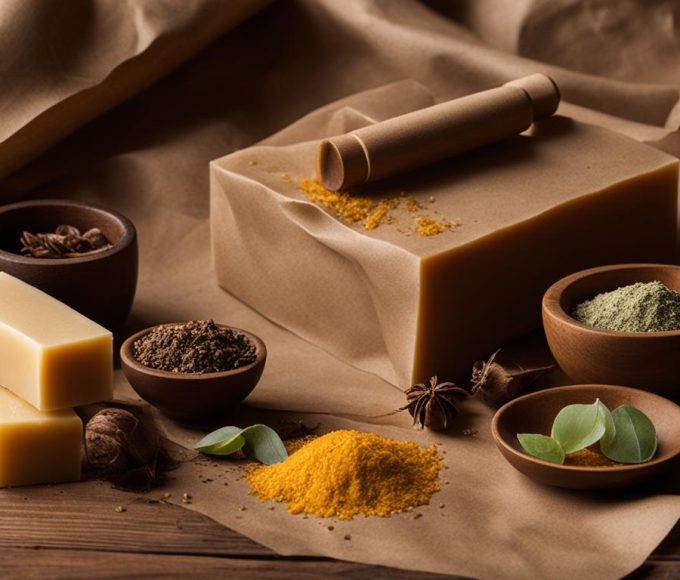
As a gardener, you know the importance of protecting your hands from dirt, thorns, and moisture while working in the soil. One of the most common ways to protect your hands is by wearing gardening gloves. However, not all gloves are created equal, and you may wonder if they are truly waterproof.
Waterproof gardening gloves are specifically designed to keep your hands dry while working in wet conditions. They are made with materials that repel water and prevent it from seeping through to your skin. But, how effective are they? Let’s explore this topic in more detail.
Key Takeaways:
- Gardening gloves are essential for protecting your hands from dirt and moisture.
- Waterproof gardening gloves are specially designed to keep your hands dry while working in wet conditions.
- The effectiveness of waterproof gardening gloves can vary based on the materials and technologies used to make them.
- Choosing the right pair of waterproof gardening gloves can make all the difference in your gardening experience.
- Caring for your gloves properly can help extend their lifespan and maintain their effectiveness.
Benefits of Waterproof Gardening Gloves
Investing in a pair of waterproof gardening gloves has many benefits that can make your gardening experience more enjoyable and comfortable. Here are some of the advantages:
- Protection from Moisture and Dirt: Waterproof gloves keep your hands dry and clean while you work in wet or muddy conditions. This can help prevent skin irritation, fungal infections, and other moisture-related problems.
- Better Grip and Dexterity: High-quality waterproof gloves are designed with materials that offer a good grip, allowing you to handle tools and plants with ease. They are also flexible, providing excellent dexterity, which is essential for delicate gardening tasks.
- Prevention of Blisters and Injuries: Repetitive gardening tasks, such as pruning and digging, can cause blisters and calluses on your hands. Waterproof gloves offer added protection and can prevent injuries from sharp tools or thorns.
- Comfort and Warmth: Waterproof gloves are often lined with soft materials that provide warmth and comfort, making them ideal for use in cold weather.
- Durability: High-quality waterproof gloves are built to last and can withstand regular use without tearing or wearing out quickly.
In summary, waterproof gardening gloves can make your gardening chores more comfortable and efficient. They offer superior protection, grip, and comfort, making them a smart investment for any gardener.
How Waterproof Gardening Gloves Work
Waterproof gardening gloves are designed to keep your hands dry and comfortable while gardening. When it comes to waterproof gloves, you may wonder how they work. Essentially, the key to their effectiveness is the materials and technologies used to make them waterproof.
Most waterproof gardening gloves are made from materials such as latex, rubber, neoprene, and nylon. These materials are naturally waterproof or treated to be waterproof, preventing water from penetrating the gloves.
In addition to the materials, many waterproof gardening gloves also feature a waterproof membrane. This membrane is typically made from a thin layer of polyurethane or a similar material and is sandwiched between the outer layer of the glove and the lining. The membrane creates a barrier that prevents water from seeping through the gloves while still allowing for breathability.
Some waterproof gloves also feature a coating or finish that further enhances their waterproof capabilities. These coatings can include materials such as PVC or nitrile, which provide an extra layer of protection against water and other liquids.
How Waterproof Gardening Gloves Work – A Closer Look
To provide a closer look at how waterproof gardening gloves work, take a look at this table:
| Glove Material | Waterproof Membrane | Coating/Finish | Effectiveness |
|---|---|---|---|
| Latex | Yes | PVC/Nitrile | Very effective |
| Rubber | Yes | PVC/Nitrile | Very effective |
| Neoprene | Yes | None | Highly effective |
| Nylon | Yes | None | Effective |
As you can see, each material offers a varying level of effectiveness when it comes to waterproofing. Additionally, gloves with coatings or finishes tend to be more effective at keeping water out than those without.
Overall, the combination of materials, membranes, coatings, and finishes in waterproof gardening gloves work together to keep your hands dry and comfortable during even the wettest gardening tasks.
Types of Waterproof Gardening Gloves
When it comes to gardening gloves, choosing the right type is crucial to ensure maximum protection and comfort. Waterproof gardening gloves come in various types to suit different gardening needs. In this section, we’ll explore the most common types of waterproof gardening gloves and their features.
Latex Gardening Gloves
Latex gloves are popular for their flexibility, durability, and resistance to punctures and tears. They are also waterproof and provide great grip, making them ideal for handling wet soils and plants. However, some people may be allergic to latex, so it’s important to check before purchasing.
Rubber Gardening Gloves
Rubber gloves are another common type of waterproof gardening gloves. They offer excellent protection against moisture and abrasion, making them perfect for heavy-duty gardening tasks. They also come in various colors and sizes, allowing you to choose the perfect fit for your gardening needs.
Nitrile Gardening Gloves
Nitrile gloves are a great alternative to latex gloves for people with latex allergies. They are also waterproof and provide excellent protection against chemicals, oils, and acids. They’re also more puncture-resistant than latex gloves, so they’re ideal for prickly plants and thorns.
Neoprene Gardening Gloves
Neoprene gloves are made of synthetic rubber and are highly resistant to water, chemicals, and abrasion. They provide excellent insulation and are ideal for colder climates or when handling cold water. They’re also great for protecting against cuts and injuries, making them suitable for heavy-duty gardening tasks.
Nylon Gardening Gloves
Nylon gloves are lightweight, flexible, and comfortable, making them ideal for light gardening tasks. They are also waterproof and provide protection against dirt and debris. They may not be as durable as other types of gloves, so they’re best for occasional use.
Leather Gardening Gloves
Leather gloves are popular for their durability and ability to protect against thorns, prickles, and cuts. While they are not 100% waterproof, some leather gloves have a waterproof lining that provides protection against moisture. They’re also great for smaller gardening tasks that require precision and dexterity.
Now that you know the types of waterproof gardening gloves available, you can choose the perfect pair to suit your gardening tasks and preferences. Remember to consider factors such as durability, flexibility, and protection when choosing your gloves.
Choosing the Right Waterproof Gardening Gloves
When it comes to choosing your waterproof gardening gloves, there are a few important factors to consider. Here are some tips to help you make the best decision:
- Size: Make sure to choose the right size for your hands. Gloves that are too big or too small can cause discomfort and reduce dexterity.
- Fit: Look for gloves that fit snugly around your wrist to prevent dirt and moisture from getting inside.
- Grip: Consider the type of grip you need for your gardening tasks. Gloves with textured palms can provide better traction while handling tools or wet surfaces.
- Dexterity: Some waterproof gloves can be bulky and limit finger movement. Look for gloves that offer both protection and flexibility to ensure you can handle delicate tasks with ease.
- Material: Different materials have different pros and cons. For example, latex gloves offer excellent grip but may cause allergies, while nylon gloves are breathable and comfortable but not as durable as neoprene or rubber gloves.
By keeping these factors in mind, you can choose the right waterproof gardening gloves for your needs and ensure a comfortable and productive gardening experience.
Maintenance and Care for Waterproof Gardening Gloves
Now that you have invested in a pair of high-quality waterproof gardening gloves, you want to ensure that they last as long as possible. Proper maintenance and care can significantly extend the life of your gloves, keeping them in top condition for your gardening needs.
Here are some practical tips on how to maintain and care for your waterproof gardening gloves:
- Regular cleaning: Clean your gloves with warm, soapy water after each use. Avoid harsh chemicals or bleach, as they can damage the gloves’ waterproof coating and cause them to deteriorate over time.
- Drying: Dry your gloves thoroughly after each use. Hang them up or lay them flat to air dry. Avoid putting them in the dryer or exposing them to direct sunlight or heat, as this can damage the gloves’ material.
- Storage: Store your gloves in a cool, dry place away from direct sunlight or heat sources. Keep them out of reach of pets or rodents, as they can chew on or damage the gloves.
- Inspecting: Check your gloves regularly for signs of wear and tear, such as holes or tears. Replace them immediately if they are damaged beyond repair, as they will no longer be effective at keeping your hands dry.
By following these simple maintenance and care tips, you can ensure that your waterproof gardening gloves remain durable, effective, and comfortable for all of your gardening tasks.
Alternatives to Waterproof Gardening Gloves
If you prefer not to use waterproof gardening gloves, there are several alternatives that you can consider. While they may not offer the same level of protection as waterproof gloves, they can still keep your hands safe and comfortable while you work in your garden.
Cotton Gloves
Cotton gloves are a popular alternative to waterproof gardening gloves. They are lightweight, breathable, and allow for greater dexterity. Although they do not offer protection from moisture, they can be helpful in preventing blisters and calluses. Additionally, they are easy to clean and maintain, making them a cost-effective option.
Leather Gloves
Leather gloves are another alternative to waterproof gloves. They are durable, comfortable, and offer excellent protection against thorns, sharp objects, and abrasive surfaces. However, they are not waterproof, and can become stiff and uncomfortable when wet. Leather gloves are best suited for dry gardening tasks.
Synthetic Gloves
There are several types of synthetic gloves available, including nylon, polyester, and spandex. These gloves are lightweight, flexible, and provide excellent dexterity. Some synthetic gloves are designed with added grip and padding to provide better protection for your hands. While they are not waterproof, they can be helpful in keeping your hands dry during light rain or when working with damp soil.
Rubber Gloves
While rubber gloves are often associated with cleaning tasks, they can also be used for gardening. Rubber gloves are waterproof, chemical-resistant, and provide excellent protection against rough surfaces. They are available in different lengths and thicknesses to suit your needs. However, rubber gloves can be uncomfortable to wear for extended periods, and may cause your hands to sweat.
When choosing an alternative to waterproof gardening gloves, consider the tasks you will be doing and the level of protection you need. Experiment with different types of gloves to find the ones that work best for you.
Tips for Using Waterproof Gardening Gloves Effectively
Investing in the right pair of waterproof gardening gloves is crucial for a comfortable and successful gardening experience. However, simply owning a pair of gloves is not enough. You also need to use them effectively to ensure they provide the protection and comfort you need. Here are some tips to help you get the most out of your waterproof gardening gloves:
1. Choose the Right Size and Fit
Make sure you choose gloves that fit your hands properly. Gloves that are too big or too small can compromise their effectiveness. When trying on gloves, ensure they fit snugly but also allow for proper movement and dexterity.
2. Use the Right Grip Technique
Waterproof gloves can sometimes make it harder to grip tools and handle delicate plants. To overcome this, try using a different grip technique, such as wrapping your fingers around tools or using your fingertips for more precision.
3. Keep Your Gloves Clean
Regular cleaning and maintenance of your gloves is key to ensuring their longevity. After each use, make sure to rinse them off with water and allow them to air dry. If they become particularly dirty, a gentle hand wash with mild soap can help remove stubborn stains.
4. Use Gloves in Conjunction with Other Protective Gear
While waterproof gardening gloves offer excellent protection against moisture and dirt, they should not be the only protective gear you use. Depending on the task at hand, you may need to wear additional protective gear, such as safety goggles, earplugs, or a hat to ensure full protection.
5. Rotate Gloves Regularly
Rotating gloves is important for both hygiene and effectiveness. By switching between gloves, you allow each pair to dry out properly and avoid the buildup of bacteria and odors.
6. Replace Worn-Out Gloves
Finally, make sure to replace your waterproof gardening gloves when they become worn-out or damaged. Worn-out gloves are less effective at protecting your hands and can increase the risk of injury.
By following these tips, you can ensure your waterproof gardening gloves provide the protection and comfort you need to enjoy your time in the garden. Happy gardening!
Conclusion
Congratulations! You have now become an expert on waterproof gardening gloves and their benefits. By investing in a good pair of gloves, you can protect your hands from moisture, blisters, and injuries while gardening.
Remember that different types of waterproof gloves are available, including latex, rubber, neoprene, and nylon. Consider factors such as sizing, fit, grip, and dexterity when choosing the right gloves for your needs.
Once you have your gloves, ensure that you care for them properly by cleaning them regularly and storing them in a dry, cool place.
If you prefer not to use waterproof gardening gloves, cotton gloves or leather gloves could be an alternative option for hand protection while gardening.
Finally, remember to use your waterproof gardening gloves effectively by ensuring a proper fit and maintaining grip while gardening.
With these tips in mind, you can now enjoy gardening without worrying about the effects of dirt and moisture on your hands. Happy gardening!
FAQ
Are gardening gloves waterproof?
Gardening gloves can come in various materials and designs, some of which are waterproof. However, not all gardening gloves are inherently waterproof, so it is essential to check the product description or label to ensure you are purchasing waterproof gloves if that is your requirement.
What are the benefits of waterproof gardening gloves?
Waterproof gardening gloves offer several benefits. They provide protection against moisture, preventing your hands from getting wet and uncomfortable while working in damp conditions. Additionally, they help keep your hands clean by keeping dirt and mud from seeping through the gloves. Waterproof gloves also offer a higher level of protection against chemicals and irritants that you may come into contact with while gardening.
How do waterproof gardening gloves work?
Waterproof gardening gloves are typically made using materials that have waterproof properties, such as latex, rubber, neoprene, or nylon. These materials are designed to repel water and keep your hands dry. Additionally, the gloves are constructed in a way that prevents water from seeping through the seams or gaps, ensuring maximum protection.
What are the different types of waterproof gardening gloves?
There are various types of waterproof gardening gloves available. Some common options include latex gloves, rubber gloves, neoprene gloves, and nylon gloves. Each type has its own features and benefits, so it’s important to consider your specific needs and preferences when choosing the right pair for your gardening tasks.
How do I choose the right waterproof gardening gloves?
When selecting waterproof gardening gloves, consider factors such as sizing, fit, grip, and dexterity. Ensure that the gloves provide a comfortable fit and allow for ease of movement. Look for gloves with textured palms or fingers to enhance grip, especially when handling tools or slippery objects. Additionally, consider the level of dexterity required for your gardening tasks and choose gloves that allow for precise movements if necessary.
How should I maintain and care for my waterproof gardening gloves?
To maintain your waterproof gardening gloves, it is recommended to follow the care instructions provided by the manufacturer. In general, you may hand wash the gloves using mild soap and warm water. Avoid using harsh chemicals or bleach, as they may damage the gloves. After cleaning, allow the gloves to air dry thoroughly before storing them in a cool, dry place. Proper care and maintenance will help prolong the lifespan of your gloves.
What are the alternatives to waterproof gardening gloves?
If you prefer not to use waterproof gardening gloves, there are alternative options available. Cotton gloves can provide basic protection and are breathable, although they may not offer the same level of waterproofing. Leather gloves are another option, as they provide durability and protection, but they may not be fully waterproof. Consider your specific needs and gardening tasks when selecting an alternative to waterproof gloves.
What are some tips for using waterproof gardening gloves effectively?
To make the most out of your waterproof gardening gloves, ensure they fit properly and provide a comfortable range of movement. Before using the gloves, inspect them for any damage or wear. When working in wet conditions, periodically check the gloves for signs of water seeping through and replace them if necessary. Additionally, maintain a good grip on tools by keeping the gloves clean and dry. Finally, follow proper care and maintenance guidelines to ensure the longevity of your gloves.
Conclusion
In conclusion, waterproof gardening gloves offer protection against moisture, dirt, and chemicals while gardening. By choosing the right pair for your needs, maintaining them properly, and following effective usage techniques, you can enjoy the benefits of dry hands and increased comfort during your gardening activities.







